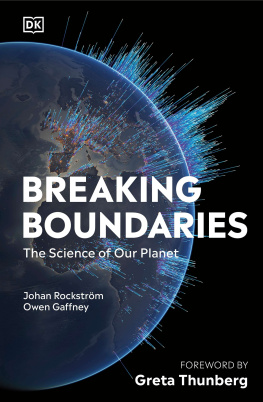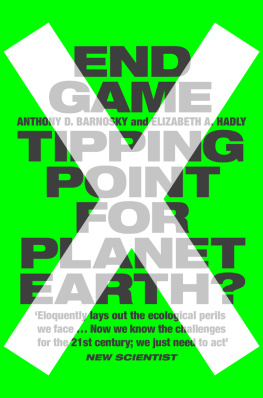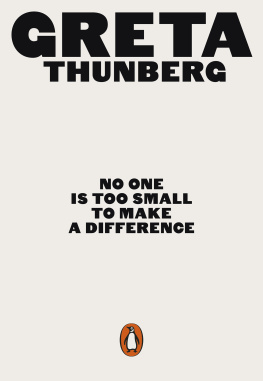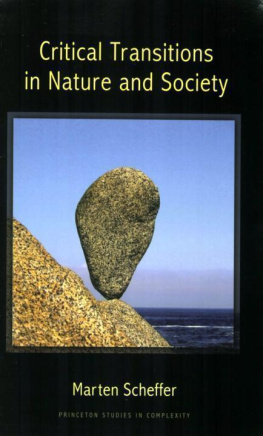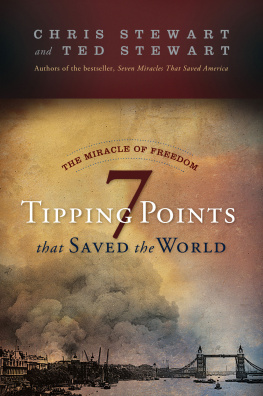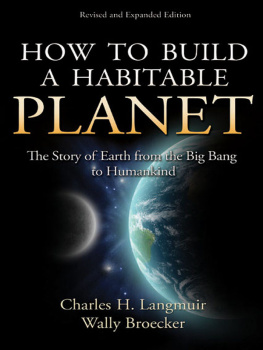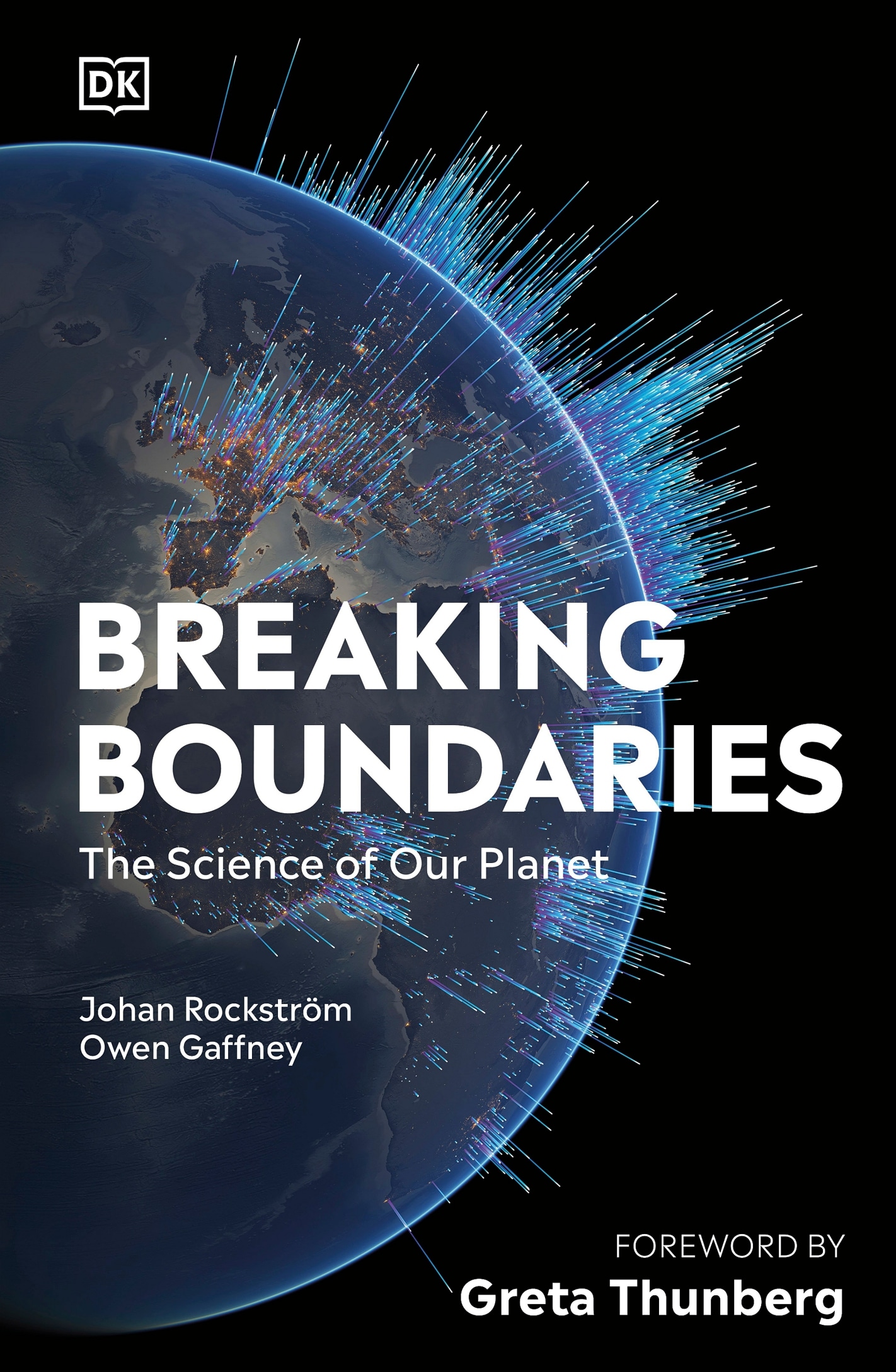OWEN GAF FNEY A ND JOHAN ROCKSTR M
BREAKING
BREAKING
BOUNDARIES
BOUNDARIES
The Science of Our Planet

First Ameri can Ed ition, 2 Published i n the U nited St ates b y DK Publi shing 145 0 Broadway , Su ite 80 1, New Y or k, NY Owen Gaf fney and Joh an Rocks trm have ass ert ed their right to be iden tied a s the authors of this work. Tex t copyright 2021 Ow en Gaff ney and Johan Roc kstrm Copyright 2021 Dor ling Ki ndersley Limited DK, a Division of Peng uin Random House L LC 21 22 23 2 4 25 1 0 9 8 7 6 5 4 3 2 1 001 7A pril/20 All ri ghts reserv ed. Without limiting the ri ghts under th e copyr ight res erv ed above, no par t of this publica tion may be rep roduced, sto red in o r introduced into a re trieval syst em, or tr ansmitt ed, in a ny form , or by any me ans (e lect ronic, me chanical, photocopy ing, recording, or otherw ise) , without the pri or writ te n permiss ion of the copy right ow ner . Published in Great Brit ain by D orling Ki ndersley L imited A ca talog r ecord for this bo ok is available from the Li brary of Con gress. ISBN 978 -0- 40-2 -3 DK books are avail able at special discounts when p urchased in bulk for sales promoti ons, premiums, fund-rai sing, or educationa l use. For det ails, c ontac t: DK Publis hing Spec ial Markets , 14 50 Broadwa y, Su ite 80 1, New Y or k, NY SpecialSales@ dk.com Printed a nd bound in the U nited St ates www. dk.com This book was made with Fore st Ste wardship Council ce rtied paperone small ste p in DKs com mitment to a sustainable future . For more inf orma tion go t o www. dk.c om/o ur-green-pledge Editor Becky G ee Art Editor Mark Lloy d Managing Editor Angeles Gavir a Managing Ar t E ditor Michael Duf fy Product ion Editor Kavita Var ma Senior Product ion Contr oller Meskerem Berhane Jacket Designer Akiko Kato Art Direct or Karen Self Associat e Publishing Direct or Liz Wheeler Publishing Dire ctor Jonathan Met calf Documentar y lm produce d by Silv erback F ilms Ltd. Color visualiza tions by Flix Phara nd-Deschnes, Globaa

ABOUT THE AUTHORS OWEN GAFFNEY Owen Gaffney was born at 324 part s per million carbon diox ide. He is a global sustainability writer , analyst, and stra tegist, based at the Po tsdam Institute f or Climate Im pact Researc h and Stockholm Resilience Centre. He is a F utur e Earth Senior F el low and an Edmund Hillary Fe llow (Ne w Zealand), and also sits on the faculty of Singularity Un iversity . He cofounded th e Exponential Roadmap Initiative and the lm com pany Gaiaxia and advises organizations such as the Global Commons Alliance. Owe n trained in astronautic engineering, lmmaking, and journalism. His wor k has appear ed in academic journals such as Nature and Science, and he has contributed to New Scientist and the WWFs Living Planet Report. He cofounded the F utur e Earth Media Lab and Rethink magazine and sits on the editorial board of the Anthropocene magazine. Owen lives in a f orest on the Stockholm arc hipelago. JOHAN ROCKSTRM Johan Rockstrm was born at 320 part s per million. He is a prof essor in Earth system science at the U niv ersity of P ots dam and profe ssor in water systems and global susta inability at Stockholm U niv ersity , as well as the dir ector of the P ots dam Institute fo r Climate Impact Research, fo under of the Stockholm Resilience Centr e, and chief scientist at Conserv ation International. He is an Eart h system researcher , whose work has appeared in high-imp act academic journals such as Nature and Science . He has given f our TED ta lks on the state of the planet . Johan is cochair of the Earth Commission and Fu ture Earth, an inter national researc h netwo rk. He is r egularl y invited to speak at the W or ld Economic F or um and has contri buted to WWFs Living Planet Report. Johan lives in Ber lin.
CONTENTS Foreword Introduction 12 ACT I T hree revolution s that shaped our planet A Sco ttish janit or and a Se rbian m athemat ician disco ver Earths hair trigger A wise man arrive s T he Goldilocks epoch C olor plat es A S leeping giants: Anta rctica A R upture w ith the past A T he Earthshot A ACT II T hree scientic insigh ts have changed h ow we view Earth P lanetary boundaries H othouse Earth E mergency on planet Ea rth C olor plat es B S leeping giants: The Amaz on B T he Great Acce leratio n B P lanetary boundaries B
ACT III P lanetary st ewardsh ip The energy tr ansition F eeding 10 billion people within p lanetary boundaries In equality is destabilizing Earth C olor plat es C N ovel entities C T he network e ect C A planet transf ormed C Bu ilding tomorr ows cities The population bomb defused T a ming the technospher e A global econom y within planetary boundaries C olor plat es D P athwa ys to stabilize Earth D L ook back at what we hav e achieved D T he Global Saf ety Net D T he rise in co mplexity: Major ruptu res in the e volution of Earth D E arthshot politic s and policies The roar ing 2020s: F our tipping points a re con verging W ise Earth Source s 228 Index 233 Acknowledgments 24 Picture cre dits 240

FOREWORD GRET A THUNBERG SWEDISH ENVIRON MENTA L ACT IVIST A stable planet is a necessary condition fo r the well-being of our civilization. And a stable planet for li fe as w e know it requi res an atmosphere that does not con tain too much gr eenhouse gas. This is basic science. The saf ety limit for the l evel of carbon diox ide in the atm osphere is thou ght to be ar ound 350 par ts per mi llio n. W e reached that landm ark so metim e in 1 7, and in 2020 we sur pass ed 4 parts per mill ion. The wo rld h as not experie nced su ch high l evels of atmosph eric carbon diox ide for at least 3 millio n year s. This increas e is happenin g at an unp receden ted speed. Hal f of th e anthr opogenic carbon dioxi de emi ssions h ave been emitt ed since 199 0i n the pa st 30 yea rs. As a result , our fu nctio ning a nd ba lanc ed atmosph ere has become a nite nat ural re source. A limit ed resour ce that today is bei ng used up primar ily by a ve ry small num ber of people. This is the hear t of th e probl em: cli mate inj ustic e. It i s not only a n issue betwe en natio ns; it is an issue wit hin all societi es. The ri chest 1 percent of th e worl ds popul ation emit more carbon diox ide than th e remai ning 90 p ercent. On aver age, the top 1 percent of in come earne rs emit tons ( metri c tons ) of car bon dioxi de per person e very year . Fo r the 50 perc ent of the wo rld populat ion w it h the l owest in comes, that same per capi ta gu re is 0.76 tons ( 0.69 m etri c tons ). These hi gh emit ters are the peop le we conside r to be suc cessful. T hey ar e our leade rs, our celebr iti es, our role mo dels. Th e peop le we aspire to be like. Or just abou t any one with a high eno ugh inc ome. Th ere ar e many el ephan ts in th e room when it come s to the cli mate crisis, a nd cli mate inj ustice is undoubt edly on e of the bi ggest. Many peop le say that we sho uld not tu rn the climate crisi s into a moral issue. Thi s wil l onl y result in inic ting gu ilt a nd sh ame, and that wi ll be cou nterp roduct ive. An d yet, the P ar is Agr eement of

